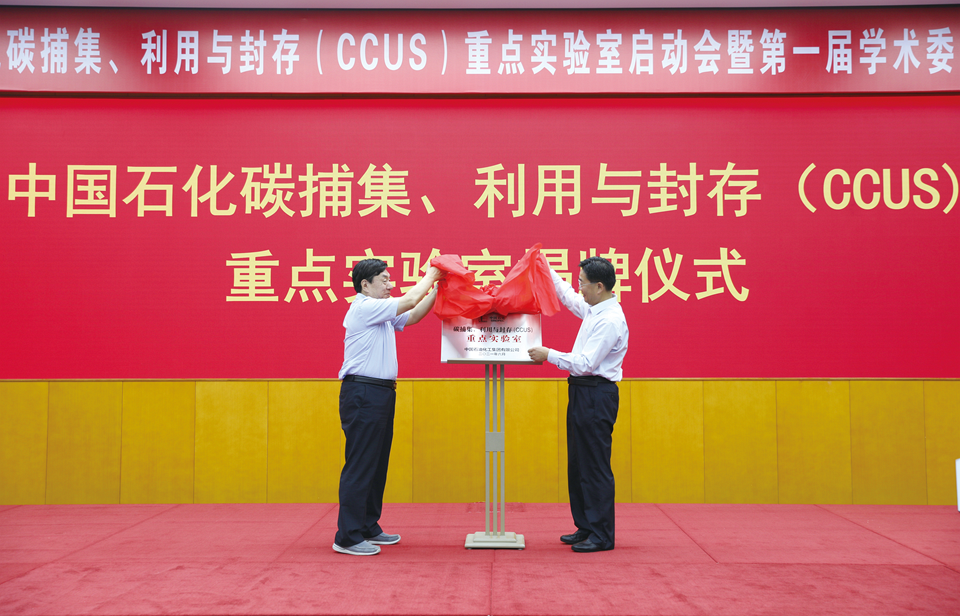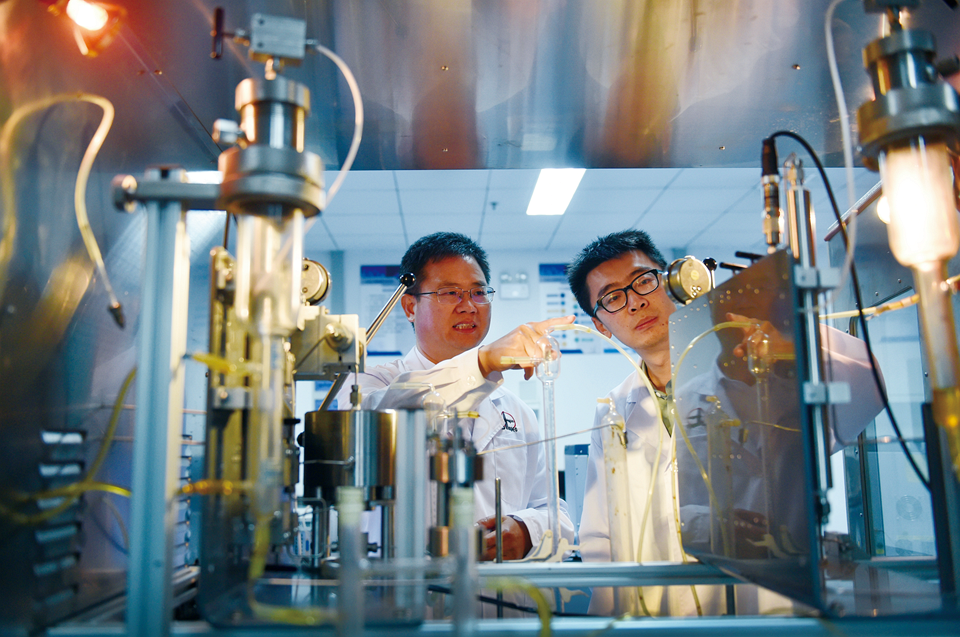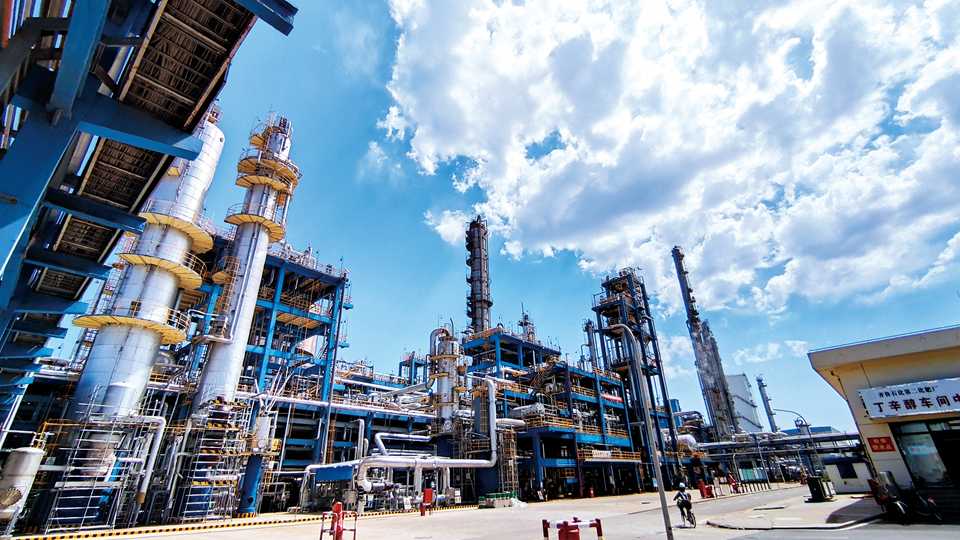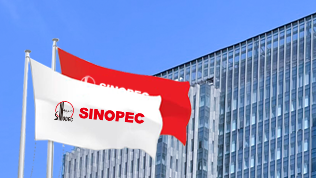First million-tonne CCUS project helps realize carbon peak and carbon neutrality goals
With the climate change response and carbon neutrality goals, CCUS, as a carbon reduction and carbon sequestration technology, has become an important part of the carbon neutrality action plans of many countries. According to the Intergovernmental Panel on Climate Change, without CCUS, the goals set in the Paris Agreement can't be realized, and the cost of global carbon emission reduction will multiply.
In recent years, Sinopec has carried out a number of CCUS research and demonstration projects, which produced good results in enhancing oil recovery and reducing carbon emissions. In July 2021, Sinopec launched its first million-tonne CCUS project in China, Qilu Petrochemical-Shengli Oilfield CCUS Project, which was completed in January 2022. As the largest CCUS full-industry chain demonstration base and benchmark project at home, it is of great demonstration significance on the large-scale development of CCUS; and of great importance to building the "artificial carbon circulation" mode and improving China's capability in reducing carbon emissions. It will also contribute greatly to the realization of carbon peaking and carbon neutrality goals.
Extended reading:
CCUS is one of the key technologies used to reduce carbon dioxide emissions. To be specific, the carbon dioxide emitted from the production process is captured and purified before being reused in a new production process and sequestrated. This can directly reduce the emissions of carbon dioxide.
After being put into operation, Qilu Petrochemical – Shengli Oilfield CCUS Project is expected to reduce the emission of 1 million tonnes of carbon dioxide each year, equivalent to planting nearly 9 million trees and not using nearly 600,000 economy cars for one year; and to increase crude oil output by 2.965 million tonnes in the next 15 years.
Carrying out research and practice to lay the foundation for projects
Sinopec has actively carried out CCUS R&D and engineering to provide valuable experience for the million-tonne CCUS project and lay a solid foundation for the fast development and large-scale application of the technology. It has conducted experiment in several oilfields; developed new modes of carbon dioxide treatment; resolved key technical problems related to CO2-EOR and sequestration and enriched theoretical knowledge. It implemented 36 CO2-EOR projects, and explored and mastered some domestically leading and international advanced capture technologies. Sinopec has systematically investigated the sources of large carbon dioxide emissions at home; studied and developed CCUS potential evaluation methods; established a source database and developed a series of low-cost processes and technologies across the whole chain.

In July 2021, the Sinopec CCUS Key Lab was set up at Shengli Oilfield

Technicians at the Sinopec Shengli Oilfield conduct a carbon utilization and sequestration experiment
Leveraging the advantage of the primary business and turning waste into something valuable
Sinopec's million-tonne CCUS project consists of two parts, i.e. carbon dioxide capture at Qilu Petrochemical, and CO2-EOR and sequestration at Shengli Oilfield. By giving full play to its advantage in integrated upstream and downstream operations, Sinopec transmits the carbon dioxide captured at Qilu Petrochemical to Shengli Oilfield, and injects and sequestrates it into the stratum for enhanced oil recovery, thus turning waste into something valuable. To capture carbon dioxide, Qilu Petrochemical has built a 1-million-tonne-per-year liquid carbon dioxide recycling facility to recover the carbon dioxide in the tail gas of the hydrogen from coal device, with the post-purification purity above 99%. To utilize and sequestrate carbon dioxide, Shengli Oilfield, applies the principle that supercritical carbon dioxide and crude oil are easily miscible; and it has built 10 unattended gas filling stations, and injected carbon dioxide into 73 wells nearby, which has made crude oil more liquid and significantly increased the crude oil recovery rate. Also, closed pipelines are used in the whole oil and gas collection and transmission system, to further improve the rate of carbon dioxide sequestration.

Sinopec Qilu Petrochemical captures carbon dioxide and transmits it to Sinopec Shenli Oilfield for sequestration and enhance the oil recovery
Pushing forward industrial layout and promoting carbon emission reduction
Research shows that China has a relatively huge geological oil reserve suitable for CO2-EOR, and over 1 billion tonnes of carbon dioxide emitted will be neutralized by CCUS in the future. Accelerating the development of the CUSS industry will help advance the clean use of fossil energies; the large-scale utilization of clean energies and low-carbon production, thus guaranteeing national energy security.
During the 14th five-year period, Sinopec will step up efforts to achieve the industrialization of CCUS. It will build a carbon capture, utilization and sequestration technology R&D center; and work for breakthroughs in frontier and reserve technologies like CCUS + new energy; and CCUS + hydrogen energy and CCUS + biomass energy. It will also increase the application of the high-value chemicals prepared with carbon dioxide and the technology of mineralizing carbon dioxide; address the challenges related to the core technologies and key equipment for carbon capture, transmission, utilization and sequestration; extend the industrial chain of clean carbon sequestration; and build the source places for the innovation of carbon emission reduction technologies. Relying on the technologies of refineries like Nanjing Chemical, Sinopec will build more million-tonne CCUS demonstration bases in places like the East China Oil and Gas Field and Jiangsu Oilfield, to create a broader outlook for the realization of China's carbon peak and carbon neutrality goals.

Sinopec Qilu Petrochemical – Shengli Oilfield CCUS Project




 Address
Address Post code
Post code Tel
Tel 京公网安备11010502035639
京公网安备11010502035639 






